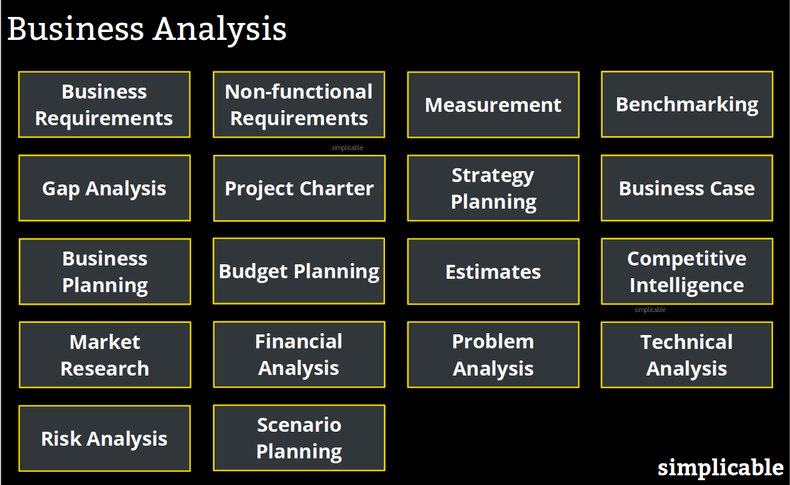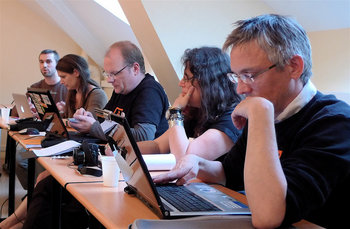
Action Plan | Budgets |
Business architecture | Business case |
Business plan | Business processes |
Business rules | Change management plan |
Change requests | Communication plan |
Competitive intelligence | Cost-benefit analysis |
Customer analysis | Customer experience analysis |
Decision analysis | Decision rationale |
Estimates | Evaluations |
Feasibility studies | Forecasts |
Gap analysis | Impact analysis |
Implementation plans | Lessons learned |
Manuals | Market research |
Metrics | Mission statements |
Non-functional requirements | Pain point analysis |
Partner evaluations | Process analysis |
Procurement plans | Project charters |
Prototypes | Quality assurance plans |
Recommendations | Reports |
Requirements | Return on investment |
Risk assessments | Risk management plans |
Schedules | Scope statements |
Specifications | Stakeholder analysis |
Strategy plans | Test cases |
Test plans | Trend analysis |
Use cases | User interface specifications |
User stories | Vision statement |
Workflows |
Business Requirements
Describing required changes in enough detail to implement and test them. For example, gathering requirements from dozens of stakeholders for a technology project and resolving inconsistencies to produce a business requirements document that is consistent, atomic, cohesive and feasible.Non-functional Requirements
Requirements that describe the qualities and characteristics of change in areas such as customer experience, operations, risk management, compliance, usability and information security. For example, a corporate style guide that describes how products, services, information, communications and user interfaces will look and feel.Measurement
Developing meaningful ways to measure things such as metrics for a business process that will highlight inefficiencies such as bottlenecks.Benchmarking
Developing numerical comparisons to understand how your organization is performing relative to an industry, competitor or theoretical maximum or minimum. For example, an ecommerce company that develops a benchmark to compare shipping costs with a close competitor.Gap Analysis
A gap analysis seeks to find problems and inefficiencies in processes, practices and tools such as an evaluation of a process that identifies opportunities for improvement.Project Charter
A project charter defines a project including background, objectives, scope, assumptions, constraints, risks and roles & responsibilities.Strategy Planning
Support of strategy planning such as a proposed solution to achieve a goal.Business Case
Developing a proposal for change to existing elements of a business. For example, a business case for a project that includes objectives, scope, payback analysis, risks and alternatives.Business Planning
Developing a proposal for a new business or line of business such as a business plan to invest in a new industry.Budget Planning
Support of budget planning processes such as an analysis of cost and risk for a proposed initiative.Estimates
Developing estimates of task duration, cost and risk. For example, estimating the probability and impact for a set of identified risks.Competitive Intelligence
Developing information about industries, competitors, markets and customers. For example, an analysis that estimates the cost base of a competitor.Market Research
Developing knowledge related to customer needs, preferences and market trends such as an analysis of what type of socks young snowboarders need and want.Financial Analysis
Financial analysis such as a revenue forecast for a product.Problem Analysis
Problem analysis such as a root cause analysis for a technology outage.Technical Analysis
Guiding the process of developing technical solutions, plans and knowledge. For example, developing an inventory of systems and applications with an assessment of the health of each.Risk Analysis
The process of identifying, assessing and treating risks. For example, developing risk treatments for a set of identified business risks.Scenario Planning
Making plans for things that might happen such as a business disaster plan for an office location.Summary

| Overview: Business Analysis Examples | ||
Type | ||
Definition | The process of developing information, knowledge and plans for business change. | |
Related Concepts | ||






























